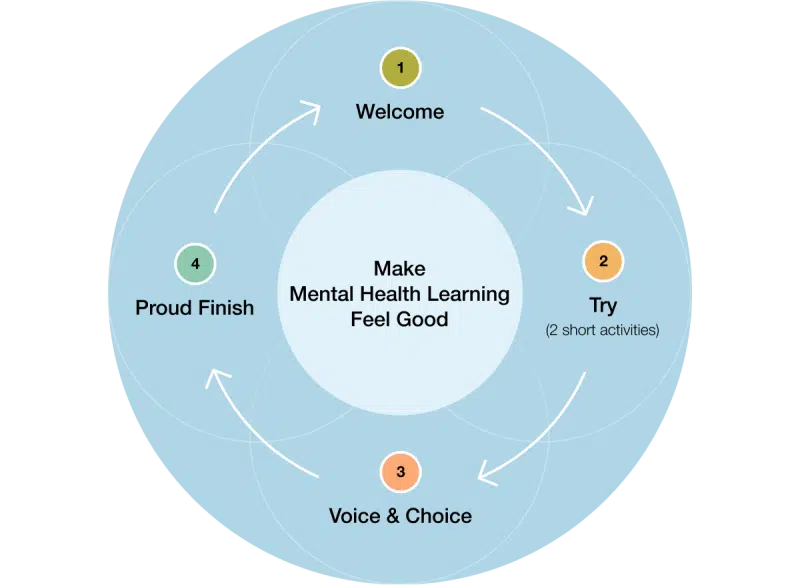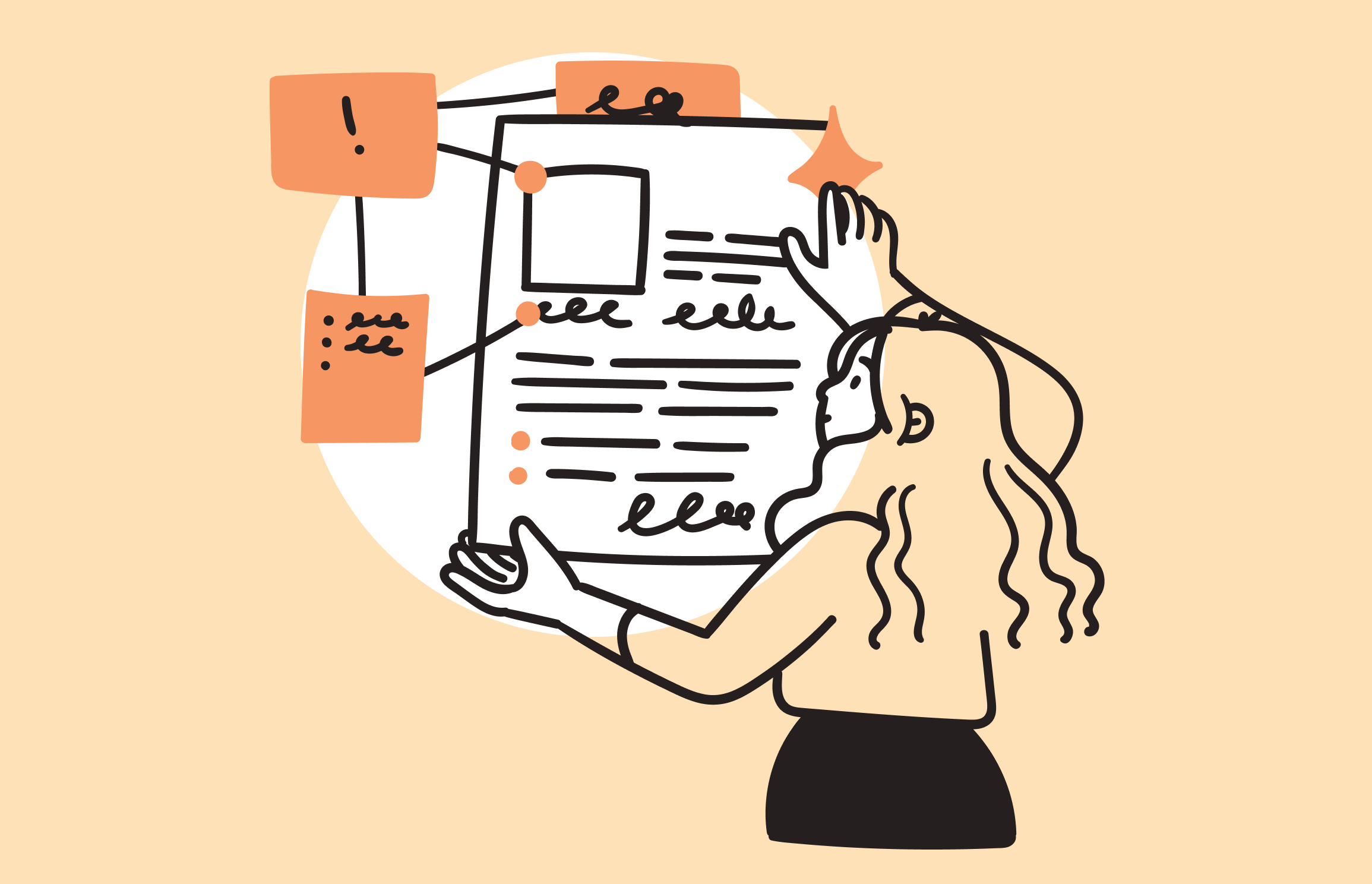Mental Health Activity Curriculum: Feel-Good Learning Framework
A comprehensive, activity-agnostic guide
This curriculum makes mental-health learning feel safe, engaging, and useful. Every session follows the Feel-Good Loop: Welcome → Try → Voice and Choice → Proud Finish. The program uses clear outcomes, access-by-design, light measurement, and steady routines to build calm, capability, and connection over time.
North Star
Create learning experiences that feel good so people leave each session a little more calm, more capable, and more connected.
The Feel-Good Loop

1) Welcome
Set the tone with a warm greeting, a quick pulse check, and a simple statement of the day’s focus.
2) Try
Offer brief, purposeful practice that lets people apply a mental-health skill in action. Keep instructions clear and the pace brisk. Rotate formats so participation feels fresh.
3) Voice and Choice
Provide options for roles, difficulty, or format. Invite input on small elements like order, timing, or reflection prompts. Ownership raises motivation.
4) Proud Finish
Close with a short reflection, a few authentic shoutouts, and a tiny practice people can use in daily life.
Repeat the same loop every session. Predictability lowers anxiety. Active practice builds skill. Autonomy deepens buy-in. Reflection locks in transfer.
Design principles
-
Start with outcomes. Write 3 to 5 specific results for each cycle. Keep them practical and observable.
-
Align practice to outcomes. If an outcome is calm under pressure, the Try segment should rehearse calming in realistic moments.
-
Keep language simple. State what to do, why it matters, and how to know it worked.
-
Balance energy. Alternate brief high-focus practice with short resets.
-
Normalize regulation. Make self-regulation options available to everyone at all times.
Culture pillars
-
Warm welcome. Names if comfortable, friendly tone, clear expectations.
-
Psychological safety. Predictable flow, simple boundaries, visible signals.
-
Kindness habits. Regular noticing of effort and support, not just results.
-
Repair language. A shared script for addressing friction and moving forward.
-
Dignity by default. Offer privacy and opt-in choices without extra attention.
Access by design
-
Always give two ways to participate or two levels of challenge.
-
Use visual cues and short demos for any new process.
-
Allow multiple ways to show learning: talk, write, sketch, act, or build.
-
Provide sentence starters and quiet roles when helpful.
-
Keep water and calm passes easy and stigma-free.
Light measurement
Keep evidence quick and useful so it guides the next session.
-
Pulse checks at the start and end on a simple 1 to 5 scale.
-
One-minute reflections on what helped and what to try next.
-
Progress snapshots on a wall or tracker that highlight calm, focus, and care.
-
Tiny take-home prompts to try between sessions.
-
Weekly note from the facilitator that captures one win and one improvement.
Planning cycle
1) Outcomes. Define what should be true by the end of the next 4 to 12 weeks.
2) Evidence. Decide how you will notice progress in seconds, not pages.
3) Experiences. Choose Try formats that let people practice the target skills.
4) Supports. Prepare visual cues, role options, and calm tools.
5) Review. After each session, record a quick win and one tweak for next time.
Session blueprint
-
Time: 40 to 45 minutes
-
Flow: Welcome 10, Try 20 to 25, Voice and Choice woven in, Proud Finish 5 to 10
-
Space: open enough to move or reconfigure, a simple calm corner, a visible routine board
-
Tone: friendly, clear, consistent
Program rhythm
Use a repeating 8 to 12 week sequence with broad themes like safety, feelings, regulation, focus, teamwork, strengths, conflict tools, choices, leadership, and celebration. Keep themes broad so you can plug in any formats that fit your setting.
Facilitator habits
-
Short huddles. Ten minutes before to set focus and roles. Five minutes after to capture insights.
-
One focus per week. For example, welcomes, transitions, or quality of reflection.
-
Consistency over novelty. Keep the loop steady and adjust in small steps.
-
Model the mindset. Calm, curious, kind, and clear.
Success markers
-
Participants volunteer ideas and ask to repeat useful practices.
-
Regulation options are used naturally without stigma.
-
Noticing and shoutouts increase over time.
-
People can name what helps and when to use it.
-
At least one tiny practice shows up outside the session each week.
Quick start checklist
-
Choose a weekly time and a simple space.
-
Write 3 outcomes for the next cycle.
-
Prepare a routine board and a basic calm corner.
-
Plan two brief Try formats that match your outcomes.
-
Add two participation options and a simple reflection prompt.
-
Run the loop, capture one win and one tweak, repeat.

